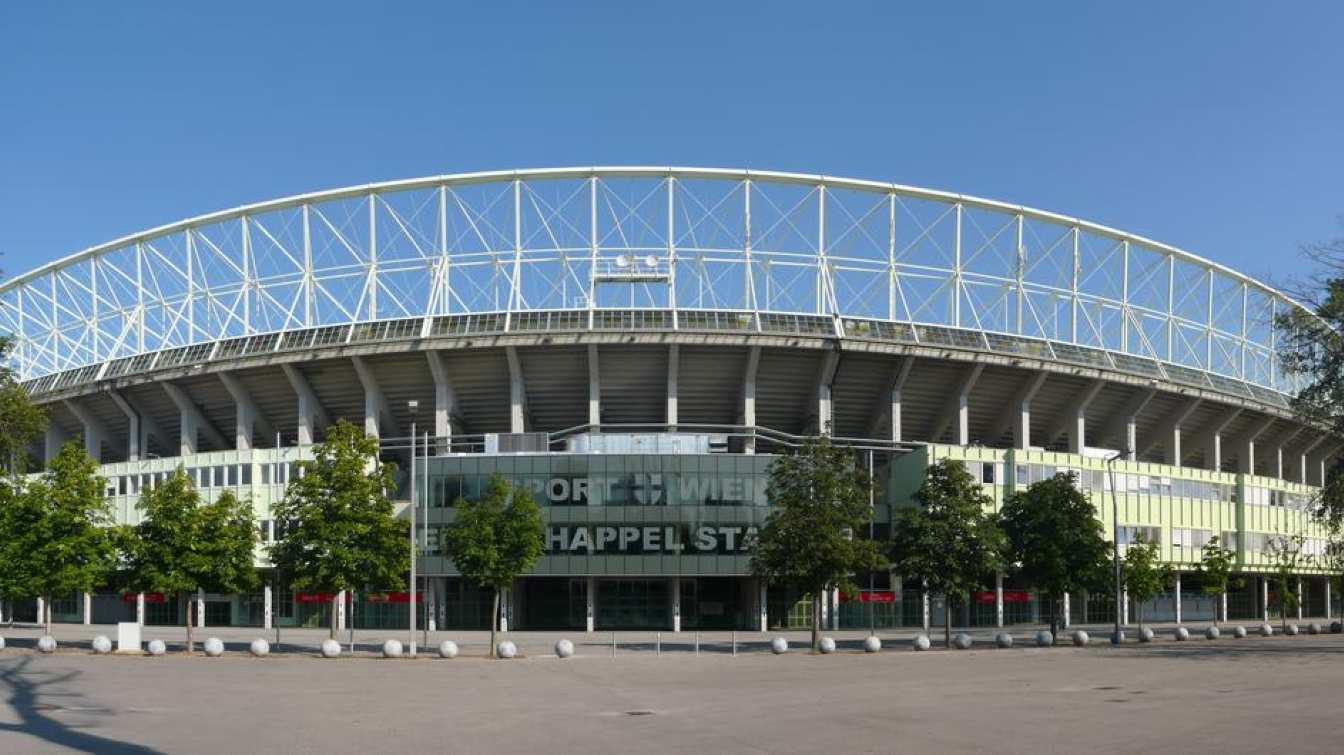Austria: Vienna seeks to upgrade Ernst Happel Stadion
source: StadiumDB.com; author: Kuba Kowalski
 The municipality of Vienna has shown plans to make the famous venue in the capital of Austria the first energy self-sufficient stadium in Europe. Ernst Happel Stadion is also to get a new retractable roof to increase the arena's ability to host events year-round.
The municipality of Vienna has shown plans to make the famous venue in the capital of Austria the first energy self-sufficient stadium in Europe. Ernst Happel Stadion is also to get a new retractable roof to increase the arena's ability to host events year-round.
Advertisement
Brief history of Ernst Happel Stadion
Construction of Ernst Happel Stadion began in July 1929 on the site of the famous Prater, a large park on the banks of the Danube. Construction took less than two years, after which it was the Praterstadion that became the arena for the biggest matches for the next decade. After Ernst Happel's death in 1992, the venue was named after him. In 1964, 1987, 1990, and 1995, the arena staged the European Cup/UEFA Champions League final.
The venue has been modernised several times during its existence. During the UEFA Euro 2008 tournament, Ernst Happel-Stadion hosted seven matches (three group matches involving Austria, two quarter-finals, a semi-final match and a final match). This event has gathered thousands of spectators, but nowadays fans enjoy more of other entertainment, also online. In the Bets.io online casino, you can choose from various slots, table games, live casino plays, play feature buy slots.
 © Peter Gugerell (copyright-free)
© Peter Gugerell (copyright-free)
In preparation for the European Championship, additional rows of seats in the first and second rows increased the stadium's capacity to 53,000. Prior to the tournament, in the summer of 2005, the stadium was equipped with heated turf. In May 2008, a connection to the Vienna U-Bahn was established, facilitating access from across the city.
Ernst Happel Stadion is set to become environmentally friendly
The announcements of the City of Vienna to upgrade the venue, which it owns and operates, came as the municipality presented the detailed results of a study commissioned in the spring to assess further investment in the stadium. These results show that while the current replaced roof and main structure of the stadium can be used until at least the mid-2060s, improvements can be made elsewhere.
In 2024, the city announced that a photovoltaic system would be built on the roof to cover the stadium's year-round electricity consumption, adding that this would make Ernst Happel the first energy self-sufficient stadium on the continent. The planned project, which is expected to cost between €10m and €12m, will be one of the largest rooftop systems in the Austrian capital with an annual capacity of 4,377 MWh. This is around 800 MWh more than the energy currently required for the stadium. The surplus energy will be used in the neighbouring Stadionbad swimming pool. In future, heating and hot water will be supplied from geothermal probes and collectors, as well as groundwater.
 © Peter Gugerell (copyright-free)
© Peter Gugerell (copyright-free)
The city said that it is also considering adding a retractable roof to improve the stadium's ability to generate revenue. Ernst Happel is the home ground of the Austrian national football team and also hosts city club matches in UEFA competitions. However, revenue from sporting events is said to be minimal, with concerts currently accounting for 93% of annual revenue. The future of the arena is to be discussed in a consultation process involving the Austrian Football Association, clubs and event organisers. This process is expected to last until the end of 2024.
Advertisement

 StadiumDB
StadiumDB